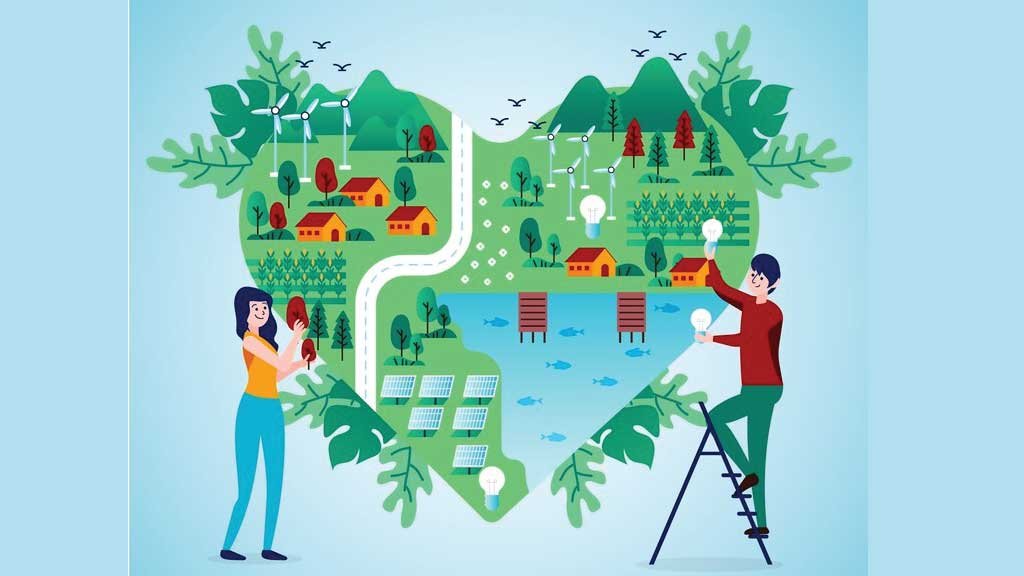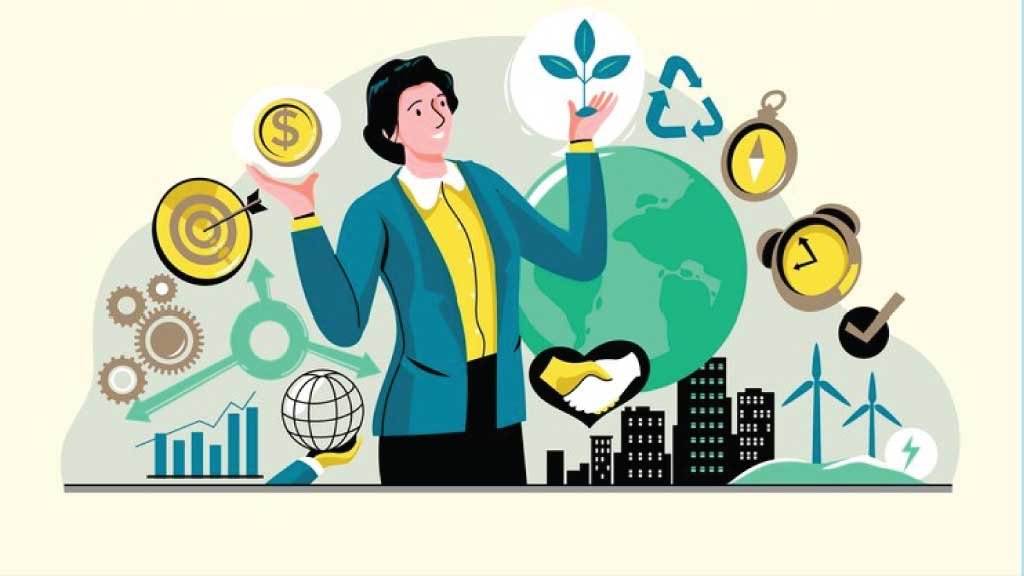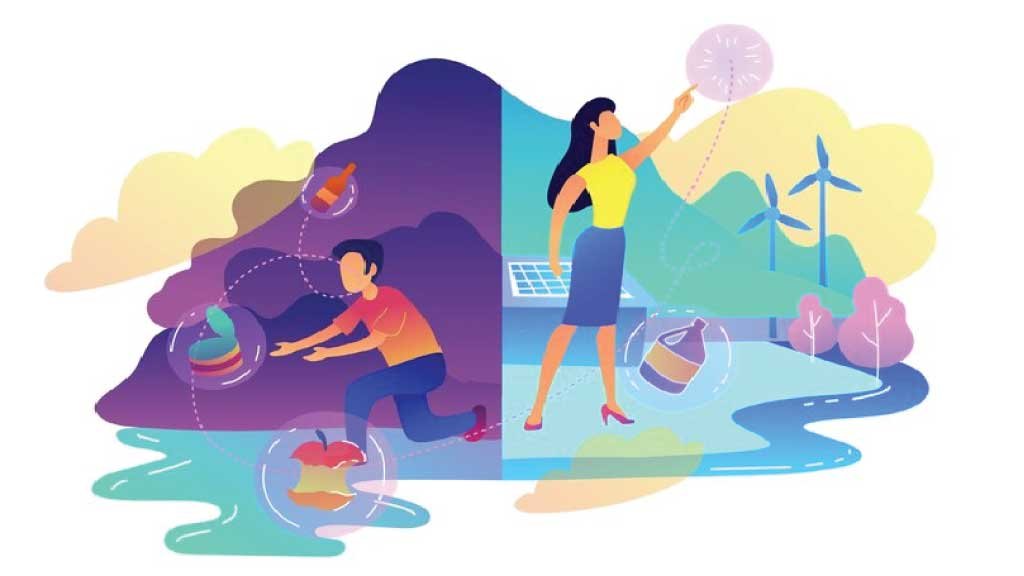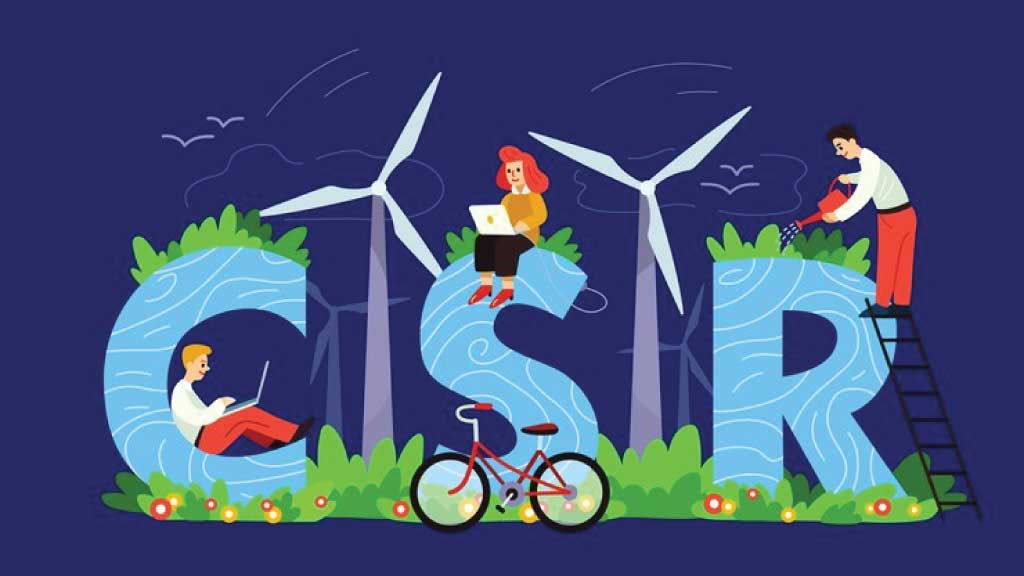In an age where environmental concerns are at the forefront of global discourse, the low carbon lifestyle has emerged as a beacon of hope for sustainable living. This lifestyle shift involves conscious choices aimed at reducing carbon emissions and minimizing environmental impact. Let’s delve into the meaning, concept, importance, and practical tips for embracing a low carbon lifestyle, along with examples of its implementation and the myriad benefits it offers.
What is a Low Carbon Lifestyle?
At its essence, a low carbon lifestyle revolves around minimizing carbon emissions associated with daily activities, consumption habits, and lifestyle choices. It encompasses a holistic approach to living that prioritizes environmental sustainability and mindful resource usage. By adopting this lifestyle, individuals aim to tread lightly on the planet, recognizing their role in mitigating climate change and preserving natural ecosystems.
Understanding the Concept
The concept of a low carbon lifestyle is grounded in the principles of sustainability, conservation, and environmental stewardship. It entails reevaluating conventional practices and embracing alternatives that reduce reliance on fossil fuels, minimize waste generation, and promote eco-friendly behaviors. From energy-efficient technologies to sustainable transportation options, the concept encompasses a broad spectrum of actions aimed at reducing carbon footprints.
Importance of Low Carbon Lifestyle
The importance of embracing a low carbon lifestyle cannot be overstated in the face of escalating environmental challenges. Here’s why it matters:
Climate Change Mitigation
Carbon emissions from human activities are a primary contributor to climate change. By reducing these emissions, individuals can play a significant role in mitigating the impacts of global warming and preserving a habitable planet for future generations.
Resource Conservation
Embracing a low carbon lifestyle promotes the efficient use of resources such as energy, water, and materials. By minimizing consumption and waste, individuals contribute to the conservation of natural resources and the preservation of ecosystems.
Health and Well-being
Many low carbon practices, such as active transportation and plant-based diets, have positive implications for personal health. By reducing exposure to air pollution, adopting healthier lifestyles, and fostering connections with nature, individuals can enhance their overall well-being.
Sustainable Development
By embracing sustainable practices and supporting eco-friendly initiatives, individuals contribute to the transition towards a more sustainable and equitable future. This fosters resilience, promotes social cohesion, and enhances the quality of life for present and future generations.
Mission Life: Living the Low Carbon Lifestyle

Transitioning to a low carbon lifestyle involves a series of deliberate choices and actions aimed at reducing carbon emissions and ecological footprints. Here are some practical tips for incorporating this ethos into everyday life:
Energy Efficiency
Investing in energy-efficient appliances, LED lighting, and smart thermostats can significantly minimize energy consumption at home. By choosing appliances with high energy efficiency ratings and using them wisely, individuals can reduce their carbon footprint while also saving on utility bills. Remember to unplug electronics when not in use to prevent standby power consumption. Additionally, consider utilizing renewable energy options such as solar panels or wind turbines to further decrease reliance on fossil fuels and promote clean energy generation.
Sustainable Transportation
Opting for sustainable modes of transportation is another key aspect of living a low carbon lifestyle. Instead of relying solely on fossil fuel-powered vehicles, consider alternatives such as walking, cycling, carpooling, or using public transit whenever feasible. These options not only reduce carbon emissions but also promote physical activity and reduce traffic congestion. For those in need of personal transportation, switching to electric or hybrid vehicles can significantly decrease emissions and contribute to cleaner air quality.
Reduce, Reuse, Recycle
Practicing the 3Rs—reduce, reuse, and recycle is fundamental to minimizing waste and conserving resources. Start by reducing consumption and avoiding unnecessary purchases. When shopping, choose products with minimal packaging and opt for durable, reusable alternatives whenever possible. Reusing items such as containers, bags, and household goods can prolong their lifespan and reduce the need for new materials. Finally, make recycling a priority by sorting waste properly and participating in recycling programs to divert materials from landfills and promote resource recovery.
Sustainable Diet
The food we eat also has a significant impact on carbon emissions and environmental sustainability. Incorporating more plant-based foods into your diet and reducing consumption of meat and dairy products can help lower your carbon footprint. Plant-based diets generally require fewer resources and produce fewer greenhouse gas emissions compared to diets rich in animal products. Support local farmers markets and choose organic, sustainably sourced foods whenever feasible to further reduce the environmental impact of your diet. By making conscious choices about the foods we consume, we can contribute to a more sustainable food system and reduce pressure on the environment.
Incorporating these tips into your daily life can help you transition to a low carbon lifestyle and make a positive impact on the environment. By focusing on energy efficiency, sustainable transportation, waste reduction, and a more environmentally friendly diet, individuals can play a crucial role in mitigating climate change and promoting a healthier, more sustainable future for generations to come.
Examples of Low Carbon Lifestyle

Numerous examples illustrate the diverse ways in which individuals and communities embrace a low carbon lifestyle:
Off-Grid Living
Off-grid living involves individuals or communities disconnecting from traditional utility services and relying on renewable energy sources for their power needs. This lifestyle choice often includes the installation of solar panels, wind turbines, or other renewable energy systems to generate electricity. By producing their own energy, off-grid residents reduce reliance on fossil fuels and minimize their carbon footprint. Additionally, off-grid living encourages energy conservation and self-sufficiency, fostering a deeper connection to the environment and promoting resilience in the face of energy challenges.
Zero Waste Initiatives
Zero waste initiatives aim to minimize waste generation and maximize resource efficiency through various practices and strategies. Advocates of zero waste strive to eliminate the concept of waste by adopting principles such as reduce, reuse, and recycle. This may involve composting organic waste, practicing bulk shopping to reduce packaging waste, and using reusable containers and bags instead of single-use plastics. By embracing zero waste principles, individuals and communities can significantly reduce their environmental impact, conserve resources, and contribute to a more sustainable future.
Urban Farming
Urban farming initiatives play a vital role in promoting local food production, reducing food miles, and increasing community resilience. In urban areas where space is limited, vacant lots, rooftops, and community gardens are transformed into productive green spaces for growing fruits, vegetables, and herbs. Urban farming not only provides access to fresh, nutritious food but also strengthens community bonds and enhances food security. By supporting urban agriculture, individuals and communities can reduce their carbon footprint by decreasing the need for long-distance food transportation and promoting sustainable land use practices.
These examples highlight the diverse ways in which individuals and communities can embrace a low carbon lifestyle. Whether through off-grid living, zero waste initiatives, or urban farming, each approach contributes to reducing greenhouse gas emissions, conserving resources, and building more resilient and sustainable communities. By adopting these practices and inspiring others to do the same, we can collectively work towards a healthier planet and a brighter future for generations to come.
Benefits of Living Low Carbon

Embracing a low carbon lifestyle offers a host of benefits for individuals, communities, and the planet:
Environmental Preservation
By reducing carbon emissions and ecological footprints, individuals contribute to the preservation of biodiversity, ecosystems, and natural resources. Lowering carbon emissions helps mitigate the impacts of climate change, such as rising temperatures, extreme weather events, and habitat destruction. By preserving natural habitats and protecting vulnerable species, low carbon living supports the health and resilience of ecosystems worldwide.
Climate Resilience
Communities practicing low carbon living are better equipped to adapt to the impacts of climate change. By reducing reliance on fossil fuels and implementing sustainable practices, such as renewable energy adoption and land conservation, communities can mitigate the risks associated with climate related hazards. This includes reducing vulnerability to extreme weather events, sea-level rise, and disruptions to food and water supplies. By building resilience, communities can better withstand and recover from climate-related challenges.
Health and Well-being
Living a low carbon lifestyle is conducive to improved physical and mental well being for individuals and communities. By reducing air pollution and greenhouse gas emissions, low carbon living helps create cleaner, healthier environments. Access to green spaces, such as parks and community gardens, promotes physical activity, reduces stress, and fosters a greater sense of well being. Additionally, adopting sustainable transportation options, such as walking and cycling, can improve cardiovascular health and reduce the risk of chronic diseases.
Economic Savings
Adopting a low carbon lifestyle can lead to significant cost savings for individuals and households over time. By investing in energy efficient technologies, such as LED lighting and energy efficient appliances, individuals can lower utility bills and reduce energy consumption. Additionally, reducing consumption and minimizing waste can result in financial savings by lowering expenses related to purchasing and disposing of goods. Furthermore, transitioning to renewable energy sources and supporting local businesses can stimulate economic growth, create green jobs, and enhance community resilience.
Low Carbon Lifestyle Tips

Transitioning to a low carbon lifestyle involves making conscious choices and adopting sustainable practices in various aspects of daily life. Here are some tips to help you reduce your carbon footprint and embrace a more eco-friendly way of living:
Energy Efficiency
Invest in energy efficient appliances, such as ENERGY STAR rated refrigerators and washing machines, which consume less energy compared to conventional models. Replace traditional incandescent bulbs with LED lighting, which is not only more energy efficient but also lasts longer. Additionally, install smart thermostats that can optimize heating and cooling settings based on your schedule and preferences. Remember to unplug electronics when not in use to avoid standby power consumption, and consider investing in renewable energy options like solar panels or wind turbines to power your home sustainably.
Sustainable Transportation
Reduce reliance on fossil fuel-powered vehicles by opting for alternative modes of transportation. Walk or cycle for short distances, and use public transit or carpooling for longer journeys whenever possible. Consider switching to electric or hybrid vehicles, which produce fewer emissions compared to conventional gasoline-powered cars. By choosing sustainable transportation options, you not only reduce carbon emissions but also contribute to improved air quality and reduced traffic congestion in your community.
Reduce, Reuse, Recycle
Practice the principles of the 3Rs—reduce, reuse, and recycle to minimize waste and conserve resources. Start by reducing consumption by only purchasing what you need and avoiding single-use items whenever possible. Reuse items such as bags, containers, and household goods to extend their lifespan and reduce the need for new products. Finally, recycle materials such as paper, glass, plastic, and metal to divert them from landfills and promote resource recovery. Be sure to check local recycling guidelines to ensure proper sorting and disposal of recyclable materials.
Sustainable Diet
Shift towards a more plant-based diet by incorporating fruits, vegetables, grains, and legumes into your meals. Reduce consumption of meat and dairy products, which have high carbon footprints due to intensive livestock farming practices. Support local farmers markets and choose organic, sustainably sourced foods whenever feasible. By adopting a sustainable diet, you not only reduce your environmental impact but also promote animal welfare and support local food systems.
Conserve Water
Install water-saving fixtures such as low-flow toilets, showerheads, and faucets to reduce water usage in your home. Fix leaks promptly to prevent water waste, and consider collecting rainwater for outdoor irrigation. Additionally, practice water-saving habits such as turning off taps while brushing teeth and taking shorter showers to further conserve water resources.
Green Energy Options
Consider switching to a renewable energy provider or purchasing green energy credits to support clean energy production. By choosing renewable energy sources such as wind, solar, or hydroelectric power, you can reduce your reliance on fossil fuels and support the transition to a more sustainable energy future.
Commuting Alternatives
Explore telecommuting options or flexible work schedules to reduce the need for daily commuting. When driving, combine trips and plan efficient routes to minimize fuel consumption. Consider carpooling with coworkers or using ride-sharing services to further reduce emissions from transportation.
Support Eco-Friendly Businesses
Choose to patronize businesses that prioritize sustainability and environmental responsibility. Look for certifications such as Fair Trade, organic, or B Corp certification when making purchasing decisions. By supporting eco-friendly businesses, you can encourage more sustainable practices throughout the supply chain and promote positive environmental stewardship.
Conscious Consumption
Before making a purchase, consider the environmental impact of the product, including its production, packaging, and disposal. Opt for high quality, durable goods that will last longer and require less frequent replacement. Avoid products with excessive packaging or harmful chemicals, and prioritize items made from renewable or recycled materials.
Community Engagement
Get involved in local environmental initiatives, community gardens, or conservation projects to make a positive impact in your neighborhood and beyond. Participate in clean-up events, tree planting activities, or advocacy campaigns to raise awareness about environmental issues and promote sustainable practices. By engaging with your community, you can inspire others to take action and work together towards a more sustainable future for all.
By incorporating these tips into your daily routine, you can reduce your carbon footprint and contribute to a more sustainable future for the planet. Every small change makes a difference, and together, we can create a greener and healthier world for generations to come.
Related Posts:
Clean Living Essentials: A Comprehensive Guide
Personal Development Plan: 7 Amazing Strategies
Low Carbon Lifestyle: 5 Easy Ways
Conclusion:
In conclusion, the low carbon lifestyle represents a conscious choice to live in harmony with the planet, prioritizing sustainability, conservation, and environmental stewardship. By embracing this ethos and implementing practical strategies for reducing carbon emissions and ecological footprints, individuals can contribute to a brighter, more sustainable future for all.
FAQs About Low Carbon Lifestyle:
How do you lead a low-carbon lifestyle?
How do you live a carbon-free life?
What are low carbon practices?
What is low-carbon behavior?
Why is low-carbon good?
What are the benefits of low-carbon?
Images ‘Designed by Freepik‘

